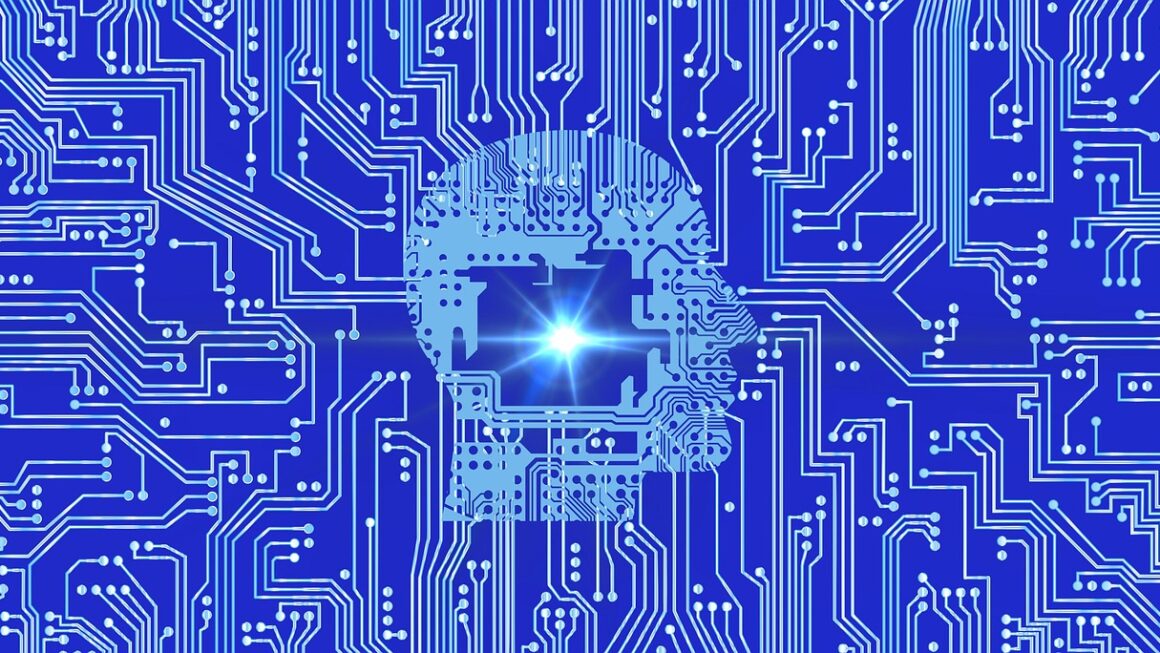Artificial intelligence (AI) is rapidly transforming the world around us, moving beyond the realm of science fiction and becoming a powerful force in numerous industries. From streamlining business operations to improving healthcare outcomes, AI applications are becoming increasingly sophisticated and integrated into our daily lives. This blog post delves into the diverse applications of AI, exploring its impact and potential across various sectors.
AI in Healthcare
Diagnosis and Treatment
AI is revolutionizing healthcare by assisting doctors in making more accurate and faster diagnoses. Machine learning algorithms can analyze medical images like X-rays and MRIs to detect anomalies that might be missed by the human eye.
- Example: AI-powered systems can detect early signs of cancer in mammograms with greater accuracy, leading to earlier treatment and improved patient outcomes. IBM Watson Oncology assists doctors in treatment decisions by analyzing vast amounts of medical literature and patient data.
- Benefit: Reduced diagnostic errors, leading to quicker and more effective treatment plans.
- Statistic: Studies have shown that AI can improve the accuracy of breast cancer detection by up to 30%.
Drug Discovery and Development
The traditional drug development process is lengthy and expensive. AI can accelerate this process by identifying potential drug candidates and predicting their effectiveness.
- Example: AI algorithms can analyze vast databases of chemical compounds and biological data to identify potential drug targets and predict their interactions with the human body. This significantly reduces the time and cost associated with drug development. Atomwise uses AI to discover new drugs by analyzing the structures of molecules and predicting their interactions with target proteins.
- Benefit: Faster drug discovery, reduced development costs, and potentially more effective treatments.
Personalized Medicine
AI enables personalized medicine by analyzing individual patient data to tailor treatment plans to their specific needs.
- Example: AI can analyze a patient’s genetic makeup, medical history, and lifestyle to predict their risk of developing certain diseases and recommend preventative measures. It can also help doctors choose the most effective treatment based on the patient’s individual characteristics.
- Benefit: Improved treatment outcomes, reduced side effects, and more efficient healthcare delivery.
AI in Business and Finance
Customer Service
AI-powered chatbots are increasingly used to provide instant customer support and answer frequently asked questions.
- Example: Many companies use chatbots on their websites and mobile apps to handle customer inquiries, provide product information, and resolve basic issues. These chatbots can operate 24/7, providing immediate assistance to customers regardless of the time of day.
- Benefit: Improved customer satisfaction, reduced customer service costs, and increased efficiency.
- Tip: Ensure your chatbot is trained on a comprehensive knowledge base and can seamlessly transfer customers to a human agent when necessary.
Fraud Detection
AI algorithms can analyze financial transactions in real-time to identify fraudulent activity.
- Example: Banks and credit card companies use AI to detect suspicious transactions, such as unusual spending patterns or transactions from unfamiliar locations. These systems can flag potentially fraudulent transactions for review and prevent financial losses.
- Benefit: Reduced financial losses, improved security, and enhanced customer protection.
- Statistic: AI-powered fraud detection systems can reduce fraud losses by up to 70%.
Predictive Analytics
AI can analyze historical data to predict future trends and outcomes, enabling businesses to make more informed decisions.
- Example: Retailers use AI to predict customer demand for different products, optimize inventory levels, and personalize marketing campaigns. Financial institutions use AI to predict market trends and manage risk.
- Benefit: Improved decision-making, increased efficiency, and enhanced profitability.
AI in Transportation
Autonomous Vehicles
Self-driving cars are perhaps one of the most visible applications of AI. They use a combination of sensors, cameras, and AI algorithms to navigate roads and avoid obstacles.
- Example: Companies like Tesla, Waymo, and Uber are developing autonomous vehicles that can operate without human intervention. These vehicles have the potential to revolutionize transportation by reducing accidents, improving traffic flow, and increasing accessibility.
- Benefit: Reduced accidents, improved traffic flow, increased accessibility for people with disabilities.
Route Optimization
AI can optimize delivery routes for logistics companies, reducing fuel consumption and delivery times.
- Example: Companies like UPS and FedEx use AI to optimize delivery routes, taking into account factors such as traffic conditions, weather patterns, and delivery schedules. This helps them reduce fuel costs, improve delivery efficiency, and reduce their carbon footprint.
- Benefit: Reduced fuel consumption, lower delivery costs, and a smaller carbon footprint.
Traffic Management
AI can analyze traffic data to optimize traffic flow and reduce congestion.
- Example: Many cities are using AI to monitor traffic patterns, identify bottlenecks, and adjust traffic signals in real-time. This can help reduce traffic congestion, improve air quality, and reduce commute times.
- Benefit: Reduced traffic congestion, improved air quality, and shorter commute times.
AI in Education
Personalized Learning
AI can personalize the learning experience for each student by adapting to their individual needs and learning styles.
- Example: AI-powered learning platforms can track student progress, identify areas where they are struggling, and provide personalized feedback and support. These platforms can also adapt the difficulty level of the material to match the student’s skill level.
- Benefit: Improved learning outcomes, increased student engagement, and personalized support.
Automated Grading
AI can automate the grading of certain types of assignments, freeing up teachers’ time to focus on more important tasks.
- Example: AI can be used to grade multiple-choice quizzes, essays, and other types of assignments. This can save teachers a significant amount of time and effort, allowing them to focus on providing more personalized instruction to their students.
- Benefit: Reduced workload for teachers, faster feedback for students, and increased efficiency.
AI-Powered Tutors
AI can provide students with personalized tutoring and support, helping them to learn at their own pace.
- Example: AI-powered tutors can provide students with personalized feedback, answer their questions, and help them to understand complex concepts. These tutors can be available 24/7, providing students with support whenever they need it.
- Benefit: Personalized tutoring, increased access to support, and improved learning outcomes.
AI in Manufacturing
Predictive Maintenance
AI can predict when equipment is likely to fail, allowing manufacturers to schedule maintenance proactively and avoid costly downtime.
- Example: Manufacturers use AI to analyze sensor data from equipment to identify patterns that indicate a potential failure. This allows them to schedule maintenance before the equipment breaks down, preventing costly downtime and ensuring that production runs smoothly.
- Benefit: Reduced downtime, lower maintenance costs, and improved efficiency.
Quality Control
AI can automate quality control processes, ensuring that products meet the required standards.
- Example: Manufacturers use AI-powered vision systems to inspect products for defects. These systems can identify defects that might be missed by the human eye, ensuring that only high-quality products are shipped to customers.
- Benefit: Improved product quality, reduced waste, and increased customer satisfaction.
Robotics and Automation
AI is used to control robots and automate various manufacturing processes.
- Example: Robots are used in factories to perform tasks such as welding, painting, and assembly. AI algorithms allow these robots to adapt to changing conditions and perform their tasks with greater precision and efficiency.
- Benefit: Increased efficiency, reduced labor costs, and improved safety.
Conclusion
AI applications are revolutionizing industries across the board, driving innovation and improving efficiency. As AI technology continues to evolve, we can expect to see even more transformative applications emerge in the years to come. Understanding the current landscape and potential of AI is crucial for businesses and individuals alike to leverage its power and stay ahead in an increasingly competitive world. The key takeaway is that AI is no longer a futuristic concept but a present-day reality, and its integration into various sectors will only continue to grow, offering unprecedented opportunities and challenges.




